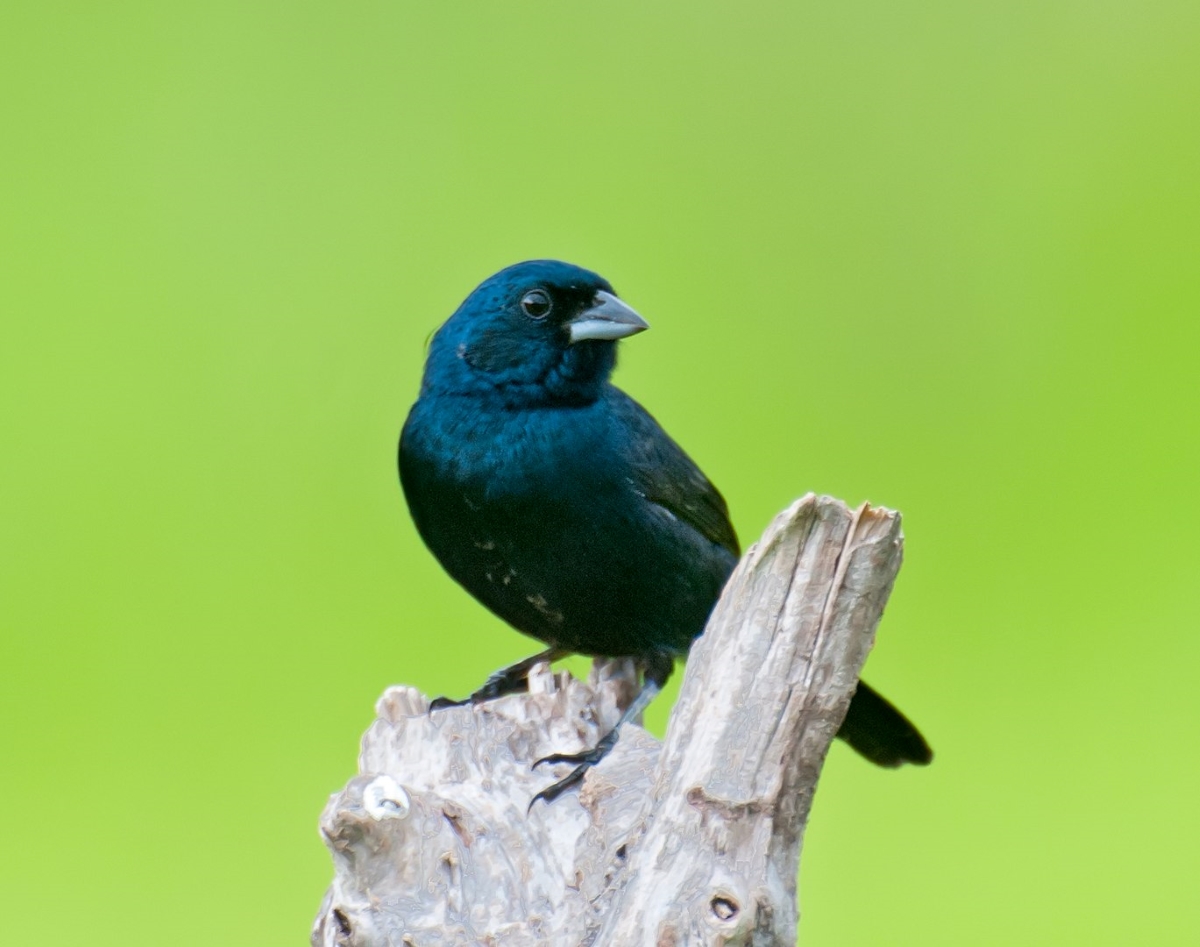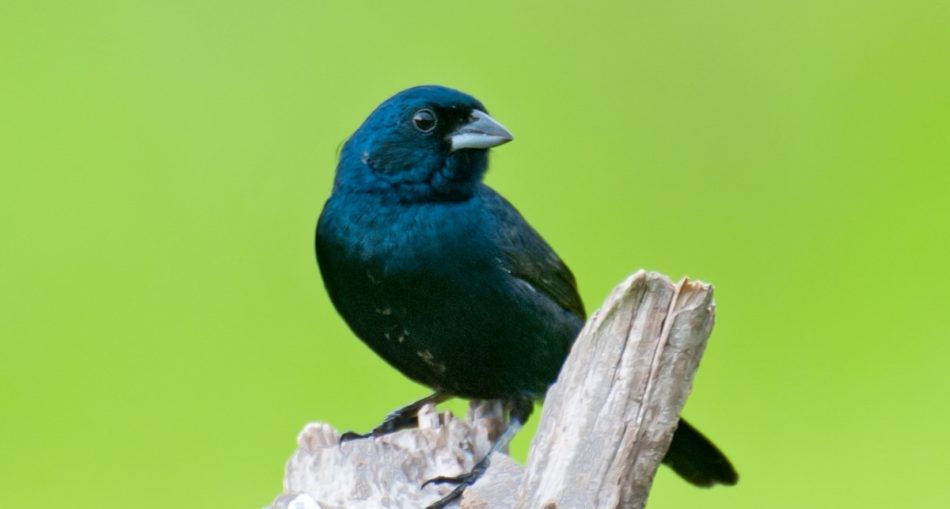The Blue-Black Grassquit is a small, Neotropical bird, classified as a tanager and the sole member of the Volatinia genus. The scientific name of the bird is Volatinia jacarina, but it is also known the Jacarina Finch and Johnny Jump-up because of its spectacular, jumping displays during courtship. The Blue-black Grassquit is a bird native to Mexico to Central America and South America in countries like Guyana, Trinidad and Tobago, Chile, Paraguay and Argentina. While this bird is relatively non-migratory some seasonal movements may occur. The species is dysmorphic; the males are a glossy blue-black colour while the females and juveniles are brown.

The Blue-Black Grassquit – Photo By Dario Sanches from São Paulo, Brazil – TIZIU (Volatinia jacarina )Uploaded by Snowmanradio, CC BY-SA 2.0, https://commons.wikimedia.org/w/index.php?curid=12690784
Description Of The Blue-Black Grassquit
The adult Blue-black Grassquit have approximate lengths of ten point two (10.2) cm and weights of nine point three (9.3) grams. Males have a glossy, dark blue-almost black body with a black tail and wings. Their underwings are white and can be seen during flight or their body courting displays. The female Blue-black Grassquit is noticeably different from the males; their plumage and tails are dark brown with live-brown upperparts. Their upperparts are buffy-white, and chest and sides streaked with dark brown while their belly and vent are white. The juveniles resemble the female Blue-black Grassquit, however, males are darker and gain adult plumage at about one (1) year of age. A whitish eye-ring can be seen on the birds with olive-brown heads with a typical dark brown iris. They have pointed, conical beaks with black upper mandibles and blueish-grey lower mandible. Their feet are also grey in colour.
Scientific Classification Of The Blue-Black Grassquit
- Kingdom: Animalia
- Phylum: Chordata
- Class: Aves
- Order: Passeriformes
- Family: Thraupidae
- Genus: Volatinia
L. Reichenbach, 1850 - Species: V. jacarina
Habitat Of The Blue-Black Grassquit
The Blue-black Grassquit typically lives in tropical, grassy areas between approximate elevations of five thousand to eight thousand (5000-8000) feet above sea level. Habitats include clearings, thickets and cultivated areas such as cropped pastured and sugarcane fields. Sometimes it frequents forest edges.
Diet Of The Blue-Black Grassquit
The diet of the Blue-black Grassquit primarily consists of seeds on the ground including those of roadside grasses or open woodlands. The bird also sometimes feed on small insects and berries. The Blue-black Grassquit are sometimes in loose flocks or pairs at food sources.
Reproduction Of The Blue-Black Grassquit
The breeding season of the Blue-black Grassquit extends from May to late August, around the same time they perform spectacular courtship displays. These include jumping displays usually from a perch, descending headfirst. Blue-black Grassquits can jump up to fifty to ninety (50-90) cm in height. Displays are accompanied by a continuous, wheezing “jweeee” call. This goes on for long periods during the breeding season, which can sometimes attract the attention of predators.
Their nests are shaped like cups, made with sturdy plant fibres and marsh grasses. The female lays about two to three (2-3) eggs, either of bluish-white or greenish hues in often unlined nests. The eggs are incubated for an approximate period of twelve to thirteen (12-13) days. Incubation is primarily done by the female but the male will continue when the female forages. Both parents are active in the care of their young and feed them. The hatchlings have a nesting period of nine to ten (9-10) days.
Interesting Tip
- The males will defend their small territories during the breeding seasons.
About The Blue-Black Grassquit
A Neotropical bird, the range of the Blue-black Grassquit extends across most of Central America and South America. Blue-black Grassquits are easily distinguished and as such are found at many grassy areas. Their bold diving displays during courtship sometimes draw unwanted attention. The Blue-black Grassquits are often found in groups especially while foraging so keep an eye out for them in grassy areas!
Article Reference
- https://en.wikipedia.org/wiki/Blue-black_grassquit
- https://ebird.org/species/blbgra1
- http://www.oiseaux-birds.com/card-blue-black-grassquit.html
- https://animaldiversity.org/accounts/Volatinia_jacarina/
- http://blogs.thatpetplace.com/thatbirdblog/2010/11/18/the-jacarina-finch-a-blue-black-beauty-for-the-small-bird-enthusiast/







